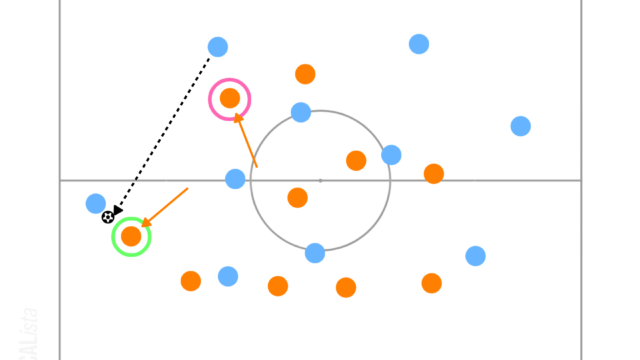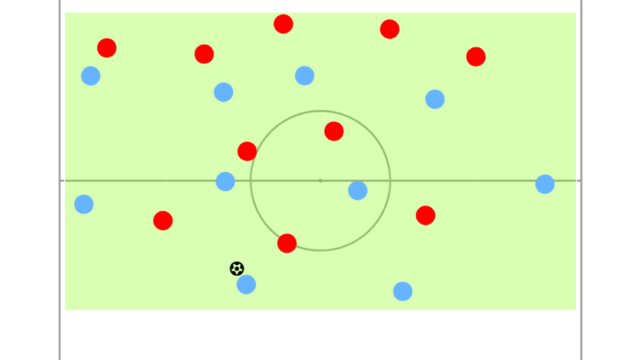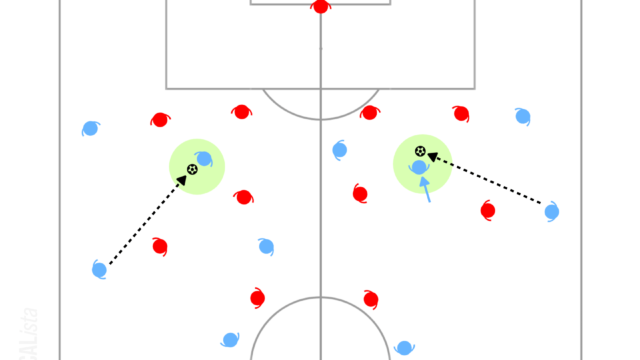How to Beat Brighton’s Build up Structure? [De Zerbi’s Conquest & The Rise of Rebellion]
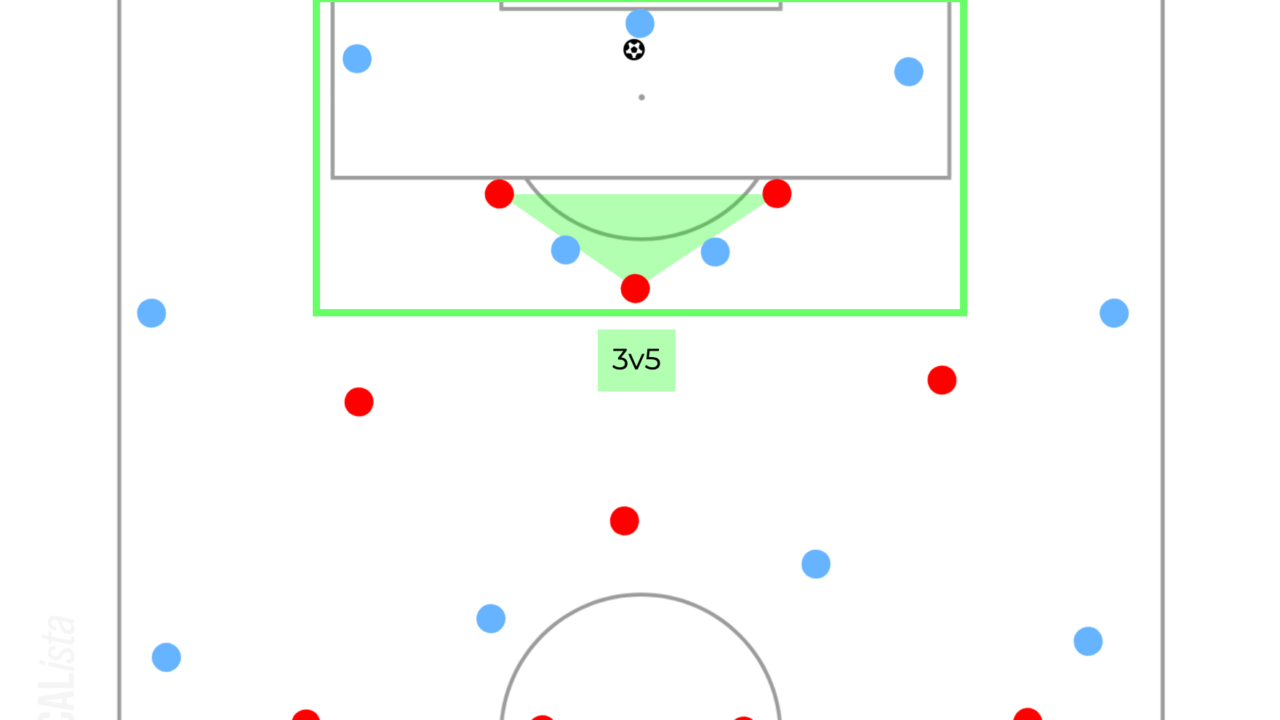
Introduction
Roberto De Zerbi has tactically conquered England. He brought a unique style of football and set a trend in the world of football. It was Manchester City under Pep Guardiola who has been in the middle of the tactical fashion, but now it is Brighton & Hove Albion under De Zerbi. However, a new trend means a new solution. Like Jürgen Klopp did against Pep, Eddie Howe and Mikel Arteta found the solution at the end of last season. And now, Pep followed De Zerbi’s football and Klopp followed the way of Howe and Arteta. The new generation has emerged.
However, copying someone’s successful work does not mean successful every time. Unai Emery did well to beat Brighton by 6-1, but Erik ten Hag failed and lost by 3-1 despite both used same system. Therefore, knowing the key factors is extremely important to truly reproduce the successful solution.
In this article, firstly the basic structure of De Zerbi’s football is going to be explained and secondly the solution against it is going to be analysed. At the end, how De Zerbi’s football can overcome this solution is going to be discussed based on the previous successful patterns. I hope you will enjoy this article.

What is De Zerbi’s Structure?
The detail tactics of Brighton this season has already been analysed in the article below, so only the structure is going to be briefly explained here.
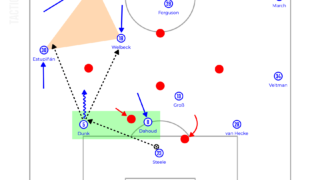
The shape can be described as 1-4-2-4, but it is easier to understand by having a look at the illustration below.

Both centre backs are slightly wider and sometimes position themselves in wide lanes, while both defensive midfielders are extremely narrow. When playing out from the back, both fullbacks and wingers keep the width to stretch the opposition lines and open the space in the middle. And the space in the middle is used by the strikers up front, who are flexible and drop back to receive a split pass.
As well as this static shape, their strength is dynamic rotations in wide areas. After successfully one of the centre backs can possess the ball with space and time thanks to the build up play with five players at the back, the triangle in the ball side rotate to give options to play forwards.

The winger’s diagonal run in behind gives an option to play over if the opposition centre back steps up to mark the striker’s movement to drop back to receive a split pass. In other words, the winger’s diagonal run can pin the opposition centre back to free the striker in the middle. To screen this passing lane, the opposition wide midfielder might be positioned narrower, but it generates the passing lane to the fullback who steps higher to break the opposition line by playing around.
The movements effectively create each option to play over, through and around, so it is extremely difficult for the opposition to stop everything. If you mark all outfield players, the goalkeeper can play over to exploit the gap which is created by dragging both centre backs out and will be used by the winger. Therefore, it seems to be traditional, but the basic principle of ‘+1 at the back’ should be applied. However, by doing this, the underload should be accepted in the higher area of the pitch, which makes it difficult to press higher.
Then, in the next chapter, the solution is going to be discussed.
The Common Solution
The basic structure is a 4-3-1-2, or 4–diamond-2. This system ensures the additional player at the back to reduce the risk of being played over, but they need to be organised to prevent them from easily playing out from the back. Therefore, the first key point is how to press in the underloaded situation.
Up front, there is an underloaded 3v5 and three attackers need to manage the opposition five players wisely.

The front three keep the compactness and screen the opposition two defensive midfielders. Therefore, the opposition goalkeeper can only play to either of the centre backs. If the opposition goalkeeper plays simple to either of the centre backs, the ball side striker jumps to apply pressure on the ball while other two players shuffle across to mark the opposition defensive midfielders.

If the opposition centre back plays back to the goalkeeper, they come back to the initial positions. Repeating this and never letting either of the centre backs comfortably play or carry forwards is their important task.
However, in case they need to apply pressure towards the goalkeeper such as when losing the game, there will be a problem. When a striker presses towards the opposition goalkeeper even with cutting the passing lane to the opposition centre back, the opposition goalkeeper can easily switch the ball to the opposite side centre back.

When the striker presses to the opposition goalkeeper, the other two attackers are still required to be narrow to mark the opposition defensive midfielders, so the opposite side centre back can have huge space and time to progress. Therefore, it cannot be a plan to apply pressure on the opposition goalkeeper. Or, when doing this, the opposite side striker needs to read when the opposition goalkeeper switches the ball and as soon as it is anticipated, he needs to sprint towards the opposite side centre back. It is all about the intensity.
Then, the next phase is how to stop the rotation. As it was mentioned in the previous chapter, it is difficult to prevent all options by defending zonally. For example, if the ball side centre back hesitates to step up to defend the space at the back, the opposition striker will be available. Then, the wide midfielder will be forced to narrow in to screen a split pass through the middle, and the opposition fullback will be available.
Therefore, the rotation should be managed by man marking. Additionally, to ensure the plus one at the back is also important. The answer is illustrated below.

One of the centre backs steps up to mark one of the opposition strikers and the defensive midfielder marks the other. This ensures the plus one at the back to deal with the winger’s run in behind. Pau Torres for Aston Villa and Virgil van Dijk for Liverpool did the job of stepping up to mark one of the opposition strikers brilliantly. Additionally, the man marking in the ball side enables them to apply pressure on the ball tightly, which causes the problem on the attacking team. This is the formula to stop De Zerbi’s structure.
However, this can fail if something important is missed. For example, to manage the underloaded 3v5 up front, unnecessary pressure on the opposition goalkeeper will be a problem. In the next chapter, the keys to be successful are going to be discussed.
The Key to be Successful
Firstly, keeping applying pressure on the opposition centre backs is so important. As it was discussed, the unnecessary aggression will make it difficult to apply pressure on the opposite side centre back. Additionally, it is just keeping shuffling across, but it is difficult to do it so many times. And if it delays, they will find a way to progress. After the opposition centre back carries the ball forwards, there will be problems.

If the opposition centre back can carry the ball to break the first line, the wide midfielder can be drawn away and the opposition fullback can be free. It is one of the easiest ways to progress and Man City did really well against Arsenal in the Community Shield because Kai Havertz often applied pressure on Ederson, which made it difficult for them to manage the 3v5.
Another key factor is never being hesitated to follow the marker. The wide triangle needs to be defended with man marking. The reason why Man United could not do well is exactly because of this. Even though they could not manage the 3v5 well due to the lack of intensity and organisation up front compared with the other successful teams, their wide midfielders often tucked inside instead of marking the opposition fullbacks, which opened wide lanes.

This is the situation where two players mark the same opponent, the dropping striker, which means there will be a spare player. Therefore, keeping man marking is extremely important in wide areas.
In the next chapter, how De Zerbi’s structure can overcome the solution is going to be discussed.
What Will Happen Next?
Both Brighton and Man City, De Zerbi and Pep have already tried some solutions against the solution. Firstly, in terms of how to build up in the 5v3, a specific movement or tweaking the shape are utilised to create space and time.
Especially, Man City’s centre backs are exceptional at carrying the ball forwards, which means how to give more time and space for them will be beneficial. To do this, one of the defensive midfielders becomes a dummy by dropping back.

Thanks to this movement, the opposition striker can be dragged inside, which provide space and time for the centre back. To be fair, this movement is performed by both Brighton and Man City’s defensive midfielders, so this is a very common solution.
Moreover, the shape itself can be tweaked to beat the opposition pressing structure. Following the movement, which was just mentioned above, one of the defensive midfielders can completely drop into the back line to form a 3-1 shape.

Compared with the goalkeeper at the back, the defensive midfielder between the centre backs can actively dribble forwards to create a 2v1. It is difficult for the goalkeeper to dribble forwards, but the defensive midfielder can.
These tactical movements can be effective for De Zerbi’s structure to constantly beat the opposition solution. Then, how to lose the opposition markers up front is the next thing to discuss.
The first key factor is utilising a lay-off by one of the strikers. Even though the opponents tightly mark each player, the strikers can receive the ball and hold up with the pressure from the back. This is a common solution against man marking, but it is really effective.

This requires an individual skill to hold it up under the tight pressure and it depends on the duel which influences the result of the battle of ‘pressing v build up’. Even though teammates’ support is also important, but this relies on heavily individual ability.
However, some movements might help them to have time and space to receive a split pass in between the lines.

Although the background was bit different, it was a game between Man City and Arsenal at Etihad last season, Arsenal’s defensive midfielder and one of the centre back did not mark both Erling Haaland and Kevin De Bruyne tightly, but the combination between them was exceptional. Haaland could pin both centre backs and De Bruyne moves across the pitch from the right half space to the left half space, which helped him to be free in between the lines.
Man marking is strong against vertical movements, but vulnerable against horizontal movements. The defenders do not want to move across their teammates horizontally, which can cause doubt in them and make the attackers free. Therefore, these movements can be a solution to beat the opposition man marking pressing.
These kinds of solutions against the opposition solution will force the opposition to find another solution. This is how tactics evolve and revive. I hope you enjoyed this article. Thank you for reading.
